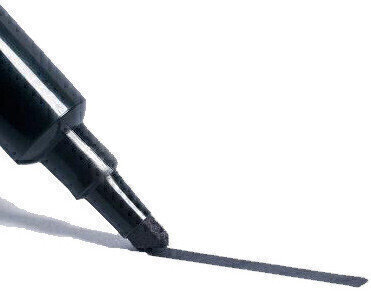GC, MDGC
What Colour is Black? Chromatography for Kids
Dec 30 2014
When we see colours on a printed page, we are looking at reflected light. White light is made up of all the colours of the rainbow — red, orange, yellow, green, blue, indigo and violet — combined in just the right amount.
When white light falls on a page with red ink, two things happen:
- The white paper reflects all of the light to our eyes so the page appears white, and
- The red ink absorbs all of the colours (in reality, it absorbs the wavelengths of electromagnetic radiation corresponding to the colours) except for red. The red part of the light (red wavelength) is reflected to our eyes — so we see red ink.
If the ink appeared green, then it would be a green light that was being reflected and viewed by us.
By using different amounts of different inks, we can make all the different colours — your colour printer uses cyan, magenta and yellow to make all the colours of the rainbow appear on your paper.
But how do we make something appear black?
Black is the absence of all the other colours — no light is reflected back to our eyes, so the ink absorbs all of the light. So how do we make black?
This is where chromatography comes in. Chromatography is just the name given to a process that separates a mixture into its components. We can use chromatography to find out what is in black ink.
What do You Need?
Finding out what colours make the ink appear black is easy and uses common household items. You will need:
- Absorbent paper — round, paper coffee filters are ideal.
- An empty jam jar or some other support.
- Black felt-tip pens — NOT PERMANENT INK.
- A means to drip water onto the paper — or alternatively use the wick method.
What do I Need to Do?
- The first step is to make a coloured circle with the black felt tip in the centre of the filter paper.
- Then place the filter paper on top of the open end of the jam jar.
- Add a few drops of water to the ink spot — and allow to the water to spread out.
- Don’t add too much water or the separation effect will be lost. Add more water if necessary.
Alternative Wick Method
With this method, cut a 1cm wide strip from the edge of the paper to the ink spot in the centre. Bend the strip down to act as a wick that allows the water to rise up to the ink.
What do you see?
What you see depends on what make of pen is used. Black ink is a mix of different colours — that combined absorb all of the white light. I got a combination of blue and red ink in my sample. Try different pens — you will see different ways to make ink appear black.
For another fun thing to try with kids — take a look at making Tie-Dye T-shirts.
Digital Edition
Chromatography Today - Buyers' Guide 2022
October 2023
In This Edition Modern & Practical Applications - Accelerating ADC Development with Mass Spectrometry - Implementing High-Resolution Ion Mobility into Peptide Mapping Workflows Chromatogr...
View all digital editions
Events
ACS National Meeting - Fall 2024
Aug 18 2024 Denver, CO, USA
Sep 04 2024 Chiba, Tokyo, Japan
Sep 04 2024 University of Warwick, Coventry, UK
Sep 10 2024 Rockville, MD, USA
Plastics Recycling World Expo Europe
Sep 11 2024 Brussels, Belgium














